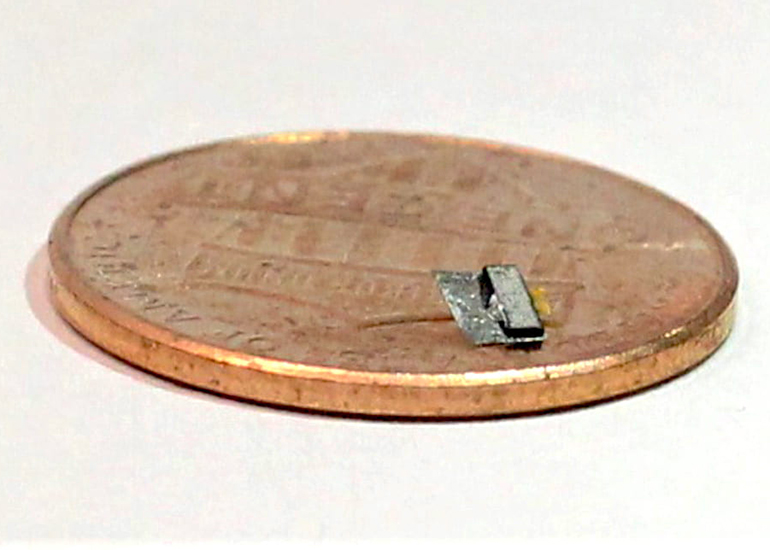

Researchers at Rice College have developed a magnetoelectric materials that converts a magnetic area into an electrical area. The fabric might be formulated such that it may be injected into the physique, close to a neuron, after which an alternating magnetic area might be utilized to the realm from exterior the physique. Magnetic fields are very helpful on this context, as they’ll simply penetrate tissue with out inflicting any harm. This magnetoelectric impact produces a small electrical present close to the neuron, successfully stimulating it, with out the necessity for invasive implants. Up to now, the researchers have proven that the expertise can bridge a totally severed sciatic nerve in rats, suggesting that it has potential as a part in neuroprosthetics.
Neural stimulation can have all types of attention-grabbing and thrilling therapeutic results, however implanting neural stimulators is invasive, and so they can require later elimination due to system failure or just to vary a battery. A substance that’s current in dimensions sufficiently small to move by a hypodermic needle, however then present an identical neurostimulatory impact beneath the affect of a minimally invasive system that’s positioned exterior the physique has some apparent benefits over a traditional implant.
“We requested, ‘Can we create a cloth that may be like mud or is so small that by putting only a sprinkle of it contained in the physique you’d have the ability to stimulate the mind or nervous system?’” mentioned Joshua Chen, a researcher concerned within the research. “With that query in thoughts, we thought that magnetoelectric supplies have been perfect candidates to be used in neurostimulation. They reply to magnetic fields, which simply penetrate into the physique, and convert them into electrical fields — a language our nervous system already makes use of to relay info.”

The fabric consists of the next: a piezoelectric layer of lead zirconium titanate between two magnetorestrictive layers of metallic glass alloys, onto which platinum, hafnium oxide, and zinc oxide have been layered. The magnetorestrictive parts within the materials vibrate when an alternating magnetic area is utilized. “This vibration means it principally adjustments its form,” mentioned Gauri Bhave, one other researcher concerned within the research. “The piezoelectric materials is one thing that, when it adjustments its form, creates electrical energy. So, when these two are mixed, the conversion that you just’re getting is that the magnetic area you’re making use of from the surface of the physique turns into an electrical area.”
Up to now, the researchers have proven that the expertise can restore operate to a totally severed sciatic nerve in rats. “We are able to use this metamaterial to bridge the hole in a damaged nerve and restore quick electrical sign speeds,” mentioned Chen. “Total, we have been in a position to rationally design a brand new metamaterial that overcomes many challenges in neurotechnology. And extra importantly, this framework for superior materials design might be utilized towards different purposes like sensing and reminiscence in electronics.”
Examine in journal Nature Supplies: Self-rectifying magnetoelectric metamaterials for remote neural stimulation and motor function restoration
By way of: Rice University
Trending Merchandise










![[2025 Upgrade] Aotedor 30 Miles Long Travel Range, Electric Wheelchair for Adults Power Wheelchairs Lightweight Foldable All Terrain Motorized Wheelchair for Seniors Compact Portable Airline Approved](https://m.media-amazon.com/images/I/51vZJPDMrOL._SS300_.jpg)
